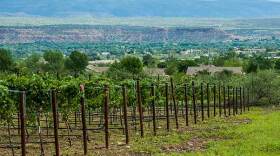The whoops of cowboys on horseback trailing cattle—What could be more symbolic of the Old West than the sounds of cowboys on horseback trailing cattle? That was the scene for nearly a hundred years along the Magdalena Stock Driveway.
The 120-mile trail extended from Magdalena, New Mexico, west of Socorro, all the way to Springerville, Ariz., generally following the route of today’s U.S. Highway 60.
The driveway began in 1885, when the railroad built a spur line from Socorro to Magdalena. With this new way of delivering livestock to market, ranchers coaxed their cattle and sheep to that railhead for shipment to Denver, Saint Louis and Chicago.
The trail was one to five miles wide to assure enough grass was available for grazing. Water became more reliable when the Civilian Conservation Corps drilled wells in the 1930s—placed at 10-mile intervals, about a day's journey for cows, two days for sheep.
The Hubbells of trading post fame, Birminghams, and Farrs were among the ranchers who used the driveway, says Bureau of Land Management archaeologist Brenda Wilkinson.
The route saw peak numbers of livestock in 1919—with 150,000 sheep and more than 21,000 head of cattle driven along it. The drives continued until 1970, when New Mexico rancher Dave Farr herded the last cattle along it—one of the longest used such routes in the country.
Today, travelers on Highway 60 can learn a bit of the story at the BLM’s Datil Well Campground, and still see the stockyards in the historic village of Magdalena at that once-busy railhead.








